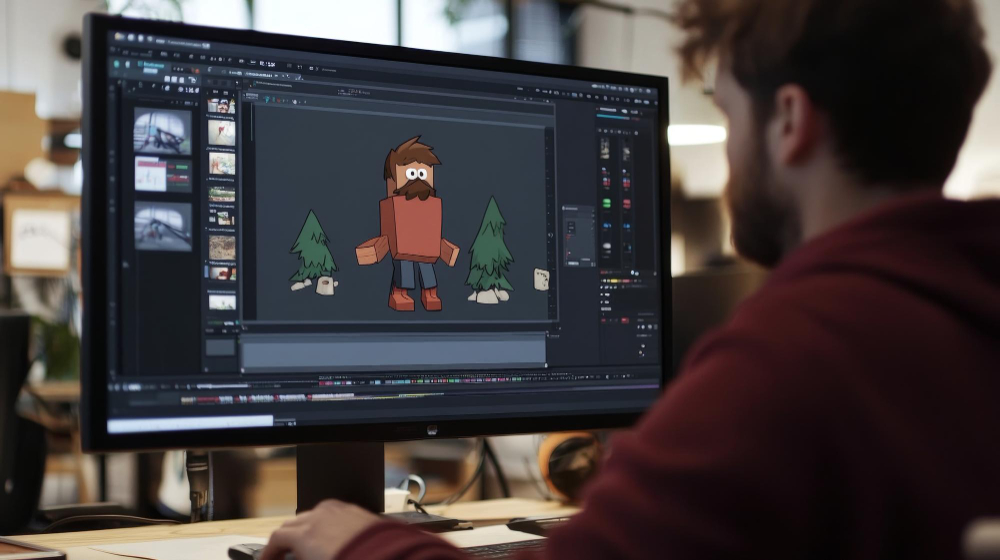In the era of captivating digital storytelling, motion graphics plays a pivotal role in how visual content is consumed and remembered. Whether it’s for blockbuster films, engaging advertisements, or animated explainer videos, the creative heartbeat of it all lies in the software used. The phrase “software for motion graphics” has now become central in every creator’s toolkit. But which tool truly deserves the spotlight? Let’s dive deep into the ever-evolving landscape of motion design tools.
Why the Best Software for Motion Graphics Sparks Debate
When it comes to picking the best software for motion graphics, opinions quickly become intense. The creative world is full of strong allegiances. Some professionals swear by Adobe After Effects, while others champion open-source alternatives like Blender. The debate doesn’t end there—Cinema 4D, Houdini, and Fusion all have their defenders and detractors.
This controversy isn’t just based on features. It’s about workflows, accessibility, budgets, and the sheer emotion attached to each program. For every person who believes After Effects is indispensable, there’s another who calls it overpriced. And while some praise Blender for democratizing 3D animation, others criticize its steep learning curve. The truth? There’s no one-size-fits-all answer.
Common Considerations When Choosing Software for Motion Graphics
Before settling on a specific tool, creators often weigh multiple factors. They assess whether the software is suitable for beginners or tailored for professional use. They explore compatibility with 2D and 3D animation requirements. Integration with existing creative suites becomes a major factor. Budget concerns naturally follow, especially when licensing costs run high. Finally, the learning curve can be the deciding factor between adoption and abandonment.
Choosing the best software for motion graphics is like selecting a creative partner. It’s a decision that impacts everything—from project timelines to the final visual impact.
Leading Contenders in Software for Motion Graphics
1) Adobe After Effects
Adobe After Effects continues to dominate the conversation around motion graphics. It’s the go-to choice for countless professionals due to its vast plugin library, animation capabilities, and seamless integration with other Adobe Creative Cloud tools. This makes it indispensable in many studios and freelance workflows.
However, the software isn’t without criticism. Its subscription model can be financially restrictive, especially for freelancers or hobbyists. Some users also report performance lags, particularly on less powerful machines. Still, its flexibility and reputation keep it at the forefront.
2) Blender
Blender offers a robust, open-source solution for those seeking power without the price tag. It supports everything from 3D modeling and motion tracking to full-blown animation. Its versatility makes it appealing to both indie creators and professional studios.
Despite its capabilities, Blender’s interface can be intimidating. The steep learning curve deters some newcomers, but those who persist often become its most passionate advocates. In the world of free software for motion graphics, Blender remains a standout.
3) Cinema 4D
Cinema 4D stands out for its intuitive workflow and powerful motion graphics tools, particularly MoGraph. It is often the software of choice for high-end commercial work and studio environments. The visual results speak for themselves—fluid animations, intricate 3D compositions, and impeccable rendering.
Yet its pricing structure poses a barrier. Cinema 4D is a premium product, and its cost reflects that. For many, the investment is justified by its ease of use and reliability. For others, it remains out of reach.
4) Apple Motion
Apple Motion may not carry the same weight as other tools, but it has earned a loyal following among Final Cut Pro users. With its real-time design environment and intuitive controls, it enables quick, effective animation within the Apple ecosystem.
Its limitations become apparent when tackling more complex projects. Additionally, being exclusive to macOS limits its user base. Still, it remains a viable option for lightweight motion design tasks and rapid prototyping.
5) Houdini
Houdini is revered in the visual effects community for its procedural animation capabilities. It excels in simulations—fire, smoke, particles—and is favored by those who need granular control over motion graphics.
However, Houdini’s complexity makes it one of the more challenging tools to master. It’s tailored for technical artists comfortable with scripting and node-based workflows. For those willing to invest the time, the creative payoff is significant.
6) Adobe Animate
Adobe Animate focuses on 2D animation and vector-based motion design. While it doesn’t aim to compete with After Effects in terms of depth, it holds its ground in areas like interactive media and mobile animations.
It’s a strong option for those working on web-based projects or character animation. However, its appeal remains niche, and many designers view it as dated compared to more modern tools.
7) Fusion by Blackmagic Design
Fusion introduces a node-based compositing workflow that contrasts sharply with layer-based editors like After Effects. Its capabilities extend deep into visual effects, making it a solid choice for those looking to branch out from traditional animation methods.
The interface can be daunting, especially for users accustomed to layers and timelines. Nonetheless, Fusion offers impressive creative power, especially when bundled with DaVinci Resolve.
8) HitFilm Pro
HitFilm Pro blends motion graphics and video editing, catering to creators looking for an all-in-one solution. Its pricing is attractive, and it includes a wide range of built-in effects.
Its hybrid nature is both a strength and a weakness. It may lack the depth of specialized tools but offers enough functionality for content creators, YouTubers, and small teams to produce professional-grade work.
9) Moho Pro
Moho Pro is optimized for 2D character animation. Its rigging system, smart bones, and physics tools make it a favorite for animators looking to breathe life into characters with minimal manual work.
While it excels in storytelling and character motion, it’s not ideal for general-purpose motion graphics. For creators focused on narrative and animation, however, Moho Pro delivers excellent value.
10) Canva Animator
Canva may not be a traditional name in motion design, but its built-in animation tools are rapidly improving. With a simple interface and quick results, Canva Animator is increasingly popular among marketers and business users.
Purists may scoff, but for users looking to generate social media content quickly, Canva hits the mark. It represents a different side of software for motion graphics—one that values speed and accessibility over technical depth.
Navigating Creative Choices Before You Decide
Before jumping to a final decision, consider your creative goals, technical expertise, and project scope. Are you aiming to build large-scale cinematic intros or quick-turnaround animations for social media? Are you collaborating with a team of designers, or are you a one-person creative studio?
Try out free trials, explore software communities, and watch tutorials to get a feel for each platform. Your comfort with the interface, the type of animation you’re producing, and your hardware setup all play a role in the final choice. Even export formats, plugin support, and rendering efficiency can tip the scales.
Final Take on the Best Software for Motion Graphics
The design world is divided, and software preferences often reflect deeper ideologies. Adobe users value familiarity and expansive toolsets. Blender supporters appreciate open-source freedom. Cinema 4D fans love precision and efficiency. Canva users just want to get their content out fast.
At the end of the day, there is no singular best software for motion graphics. The best choice is the one that complements your creative needs, project requirements, and workflow preferences. It’s less about the tool and more about how effectively you use it.
Interesting Reads





